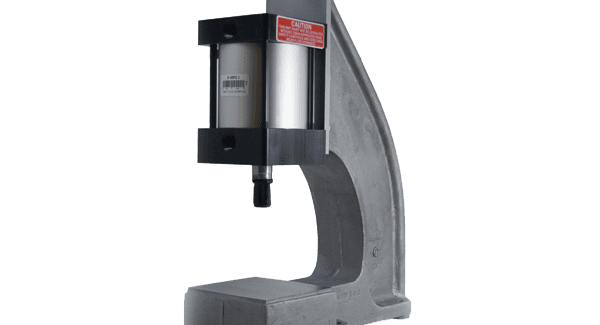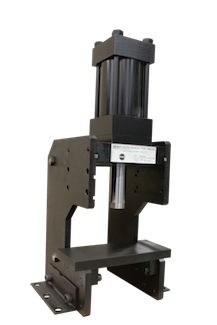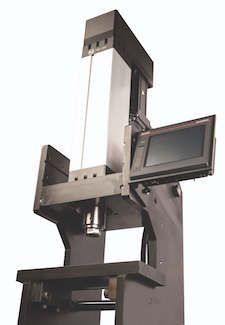Don’t Get Depressed: There Is A Solution For Your Application
Pneumatic, hydraulic, and electric presses are available in a wide range of models that offer an ever wider range of force, position accuracy, and speed capabilities. Bimba technical experts outline the pros and cons of each press type to make your decision easier.
Posted: August 17, 2020
BY ED LONG
If you’re a manufacturing engineer, you’ve surely encountered projects that required squeezing, forming, bending, and/or riveting. Press solution is critical, but the correct choice isn’t always obvious. Pneumatic, hydraulic, and electric presses are available in a wide variety of models that offer a wide range of force, position accuracy, and speed capabilities. Recent technological innovations have produced a dizzying array of options.
Not only must you choose the press that offers the best possible solution for the application, but also the one that’s most economical, easiest to set up, and most useful in providing feedback on press distance and applied force. And that’s not even taking essential safety considerations — like two hand controls — into account.
Let’s consider the choices, focusing on what the job requires and which press types are most suitable.
Pneumatic Presses
Appealing because they’re economical and effective in many operations, such as crimping, heat sealing, bending, forming, pressing, swaging, riveting, and burnishing. They’re some of the most common presses and bring a wide array of benefits that make them attractive to the average manufacturer.
Benefits
Easy to install; they can be attached to a shop’s air supply and deployed with minimal integration.
Cost-effective for their capabilities and output and fit most common application needs.
Relatively low maintenance because dry compressed air causes few issues with internal components.
Many different types – including arbor, benchtop, and adjustable-column configurations — provide flexibility in all kinds of applications.
Economical single-acting, air-powered presses reduce production costs by allowing for automated operations.
Drawbacks
Operator must manually make settings and changeover adjustments, which may increase application downtime and introduce the potential for error.
Struggle to perform higher-force tasks and consume large quantities of compressed air, unlike hydraulic or electric models.
Most aren’t equipped to handle tough materials or large quantities at once.
Hydraulic Presses
They fill a lot of the same spaces as pneumatic presses but provide much higher output forces. With routine maintenance, they’re generally more robust and dependable. Mid-tier price points provide some of the best force-to-cost ratios.
Benefits
Higher pressing force and durable designs withstand tougher applications.
Cost versus force output is unmatched.
More dependable when working with high-friction materials requiring high forces and performing repetitive actions.
Wide variety of models provide options for every application.
Drawbacks
Slower than air or electric options.
Power units run constantly to maintain system pressure, increasing noise levels and energy consumption.
Hydraulic fluid leaking from fittings and systems may require more maintenance than air or electric options.
Electric Presses
Designed to provide complete control over process speed, pressing force, and home position, advanced models add more flexibility to applications and make the pressing process easier. Though they’re less common, electric presses present a high-quality option when pneumatic and hydraulic presses don’t meet application needs.
Benefits
They can monitor pressing distance and applied force as well as automate assembly processes that require high repeatability with faster cycle times.
Often feature a networkable color HMI to monitor production data and enable operators to quickly and easily change production settings for faster changeover and setup times.
Oversized internal ball screws deliver force output ratings of 3,000; 6,000; or 12,000 pounds of pressing force.
Infinitely variable speed, position, and force control makes them uniquely suited for applications where pneumatic or hydraulic presses can’t meet process demands.
More energy-efficient than hydraulic and pneumatic presses.
Highly accurate and repeatable in terms of force control and positioning.
Controls including solid-state safety relays make integration into manufacturer’s safety circuit simple and very flexible.
Drawbacks
Initial capital expenditure is generally higher than manual or pneumatic press.
Initial setup and system commissioning can be time-consuming and more complex.
Motor and thrust actuator determine speed, force, and thrust to defined limits.
Electric motors can overheat if run continuously, which can cause more wear and tear on the gears than average use.
Whether your press needs to be fast, robust, or repeatable, there’s an option out there to suit your application needs.














